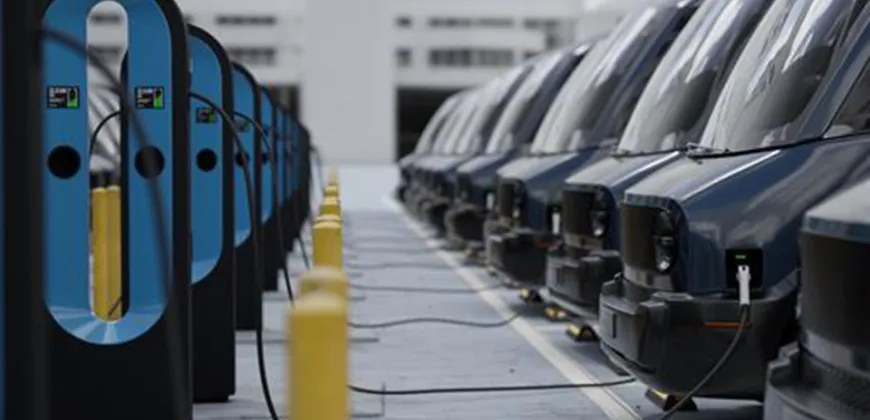Urban Systems students develop advocacy system map and action plan for BEST’s Eco-Voyage initiative

In 2025, a group of three UBC master’s students worked with Better Environmentally Sound Transportation (BEST) to develop a framework and action plan to expand the reach and impact of BEST's Eco-Voyage initiative.
The students completed this project as part of their course on Urban Systems Analysis and Planning. Taught by Dr. Su-Jan Yeo, the course requires students to work with a community partner on a planning challenge. In 2025, students partnered with BEST, which had recently piloted the Eco-Voyage initiative to raise awareness of multimodal transportation options for newcomers to Vancouver.
“We had successfully delivered workshops for newcomers on sustainable transportation and we wanted to know what avenues we could pursue beyond this,” says Silvana Martinez, the research and project coordinator for Eco-Voyage. “We asked the Urban Systems students to recommend ways we could move beyond project delivery to enter into new spaces and work in more of an advocacy role.”
Mohannad Qutub, Nicolas Gomez and Xuqing Fan began by researching the challenges faced by newcomers to Metro Vancouver in getting around the region – from navigating transit systems and learning about sustainable transportation options like cycling, to safety concerns and affordability. They then assessed the strengths and weaknesses of the Eco-Voyage pilot initiative. From this, they developed their guiding research question: “How can Eco-Voyage leverage strategic partnerships and tailor its workshops to support more equity-seeking groups with greater access to the city?”
BEST suggested the three students build a systems map to better understand the environment in which BEST operates. “On other projects we’ve found that this approach helps us frame the issue, understand where we fit in and identify where we can grow into,” says Martinez.
Gomez explains that a system map shows all the elements in place in a system and the connections between them. “When you see how they interact with each other, you are able to identify the leverage points and the places in the system that have the most significant influence on the other elements.”
From there, explains Fan, the students would be able “to create actionable strategies to make the project more sustainable.”
The three developed a framework that BEST could use to reach out to key partners, demonstrate how the initiative aligns with each partner’s specific values, and expand its reach.
The students identified three potential partner groups: the private sector, educational institutions and municipalities. Each student focused on one sector to come up with a needs assessment, value proposition, recommendations for audience outreach, tailored workshop content, and engagement and evaluation processes.
“For example, for the private sector we focused on how companies that care about sustainability metrics want to reduce their carbon footprint, which often includes measuring how their employees travel to and from work,” explains Qutub. “Private sector organizations that partner with BEST can reduce their carbon footprint by offering the Eco-Voyage project to raise employee awareness about sustainable options to get to and from work.”
Recommendations for promoting audience engagement ranged from organizing scenario-based activities to setting up friendly competitions between participating companies to track sustainable commuting and promote long-term behavioural change.
The students focused on the City of Surrey as an example of how Eco-Voyage could work with a municipality. “Surrey has a high population of newcomers and there is therefore a real possibility to have an impact with a project like this,” says Gomez. “We identified potential partners in Surrey for developing an outreach strategy to let people know about public transit, as well as car sharing and bike sharing. We want people to know that you do not need to buy a car to move around in the city or beyond.”
UBC was the focus of what a partnership with an educational institution might look like. “UBC has ambitious sustainability goals and a large international student population,” says Fan. “There are also many researchers working on sustainable transportation and there could be opportunities for BEST to partner with them.”
The students’ framework provides a consistent process BEST can apply to each partner group that is flexible and can be tailored for that group based on the clear value proposition of what BEST can bring to the relationship.
Over the course of the project, the students met regularly with Martinez at BEST for feedback on their latest work and ideas. At the end of term, they presented their findings and recommendations to a broader group, including the non-profit’s executive director.
The students are proud of how they were able to work together to develop a plan that could advance the goal of ensuring multimodal transit systems meet the needs of all populations.
“I am a newcomer to Canada and I appreciate the opportunity to be involved in an initiative to shape communities,” says Fan. “When I first arrived in Vancouver, I definitely had questions about transportation. It’s exciting to be able to contribute ideas that could enhance Eco-Voyage’s workshop content and help BEST create partnerships for the future.”
Qutub notes that all three team members have backgrounds in engineering.
“This project provided us with a good introductory way to learn about planning, which is a different way of thinking than we have used in our professional careers.”
Martinez says that BEST also benefited from this research project. “The work the students did helps us think about what potential partners we could work with and identify potential funding opportunities,” she says.
“We had a really good collaboration with the students. It means a lot to us as a non-profit to be able to work with students from UBC to identify those spaces where we can have more of a voice and influence other decision-makers, as well as imagine new ways our programming can evolve to support mobility justice.”


